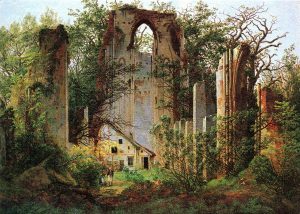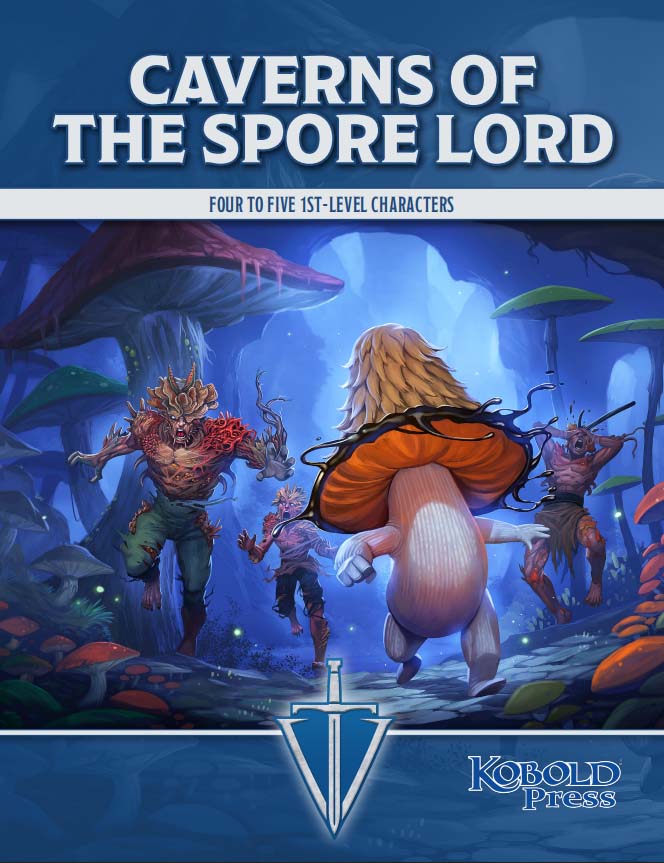
Some locations—the wizard’s tower, the sunken temple, the haunted house—appear repeatedly in stories and adventures. In this series, we’ll explore the archetypal lost temple, playing with or defying tropes, and presenting rules and ideas to bring these locales to life and to set you up for success when putting them into your game.
Read more articles in this series!
It’s a Secret!
The greatest motivator to plunder some ruined temple in remote, godforsaken areas, battling monstrous denizens, traps, curses, and natural hazards is, of course, loot (which will be addressed in the next installment)!
The second-greatest motivator, however, might just be the promise of lore, secrets, and knowledge lost to time. Such things can change the course of a campaign—or launch one!
This is a flexible category of reward, curse, or MacGuffin, as the case may be. It can be anything from a scrap of parchment with a forbidden phrase to summon an archdevil to an enormous tome describing a year-long ritual to make the ocean swallow up a continent. It could also be a mechanical bit of lore, such as a unique and powerful spell or a mystical puzzle that grants the gift of clairvoyant insight to the one who solves it.
Lore Makes the (Campaign) World Go ‘Round
Using lore in any setting requires a bit more preparation and attention to the details and themes of your campaign. As part of random events or side encounters, forgotten lore may lose some of its punch.
So it helps to consider what your adventurers might find ahead of time and how to deliver it. Truly world-moving secrets must be revealed carefully . . . and often not in their entirety. Reveal enough to let the adventurers take the story in a new direction, but hold back enough for some surprises along the way.
While not as simple as rolling for a few shiny magic items or treasure, letting adventurers excavate hidden and forgotten knowledge can be your way to launch a new story, perpetuate a current one, or reinforce your campaign’s themes, as these examples explore:
- The rumored secrets in the temple might contain the only hope of ending a mysterious contagion leveling the kingdom—a contagion, it’s rumored, that was only defeated once before by the devoted followers of a now-forgotten healer god.
- The explorers find the temple innocently enough, but stumble across a terrible prophecy predicting a coming cataclysm. This punishment was levied against all humankind for an ages-ago war which killed an orcish god. That god is set to return, and events are already unfolding as foreseen.
- In a campaign setting where arcane magic is outlawed since the reign of a goddess of magic gone mad, her remaining temples, buried and forbidden, provide some of the only access to arcane spells and knowledge.
The Table of Dark Secrets
Use the table below to conjure up some secrets to tantalize your players. You might need to adjust it for your campaign, but putting your own spin on it is part of the fun.
| d12 | Type of Lore | Form of the Lore | Supposed Effects |
| 1 | An arcane spell | Blood sigils on the wall | Defies death |
| 2 | A buried secret | A scrap, or reassembled torn papers | Conjures a demon or devil |
| 3 | A divine revelation | Runes or pictographs carved into floor | Conjures a god |
| 4 | An arcane ritual | Ancient stone tablets | Wide-scale weather control |
| 5 | Eldritch lore | Depicted in murals or mosaics | Creates fiery rain |
| 6 | A blessing | An enormous old tome | Swallows a city or other location |
| 7 | A curse | A diary or journal | Causes shapeshifting |
| 8 | An invocation | A talking skull | Class powers/spellcasting |
| 9 | Long-lost knowledge | An illusory projection or a vision | Innate special ability |
| 10 | Forbidden knowledge | Whispers in the dark | Time travel |
| 11 | A prayer | A scroll or map | Cures or creates a magical pox |
| 12 | A name | A mystical object | Extraplanar travel |
Take the results and fill in the blanks as appropriate for its traits and your campaign. A little creative interpretation goes a long way. The following examples range from minor points of interest to full-scale campaign events:
Example 1. An invocation | on a scroll | that grants class powers or spellcasting. This scroll depicts an invocation of a goddess of knowledge. By following the proper steps and honoring her forgotten shrine to restore its light, the invoker gains a blessing to be able to cast a 3rd-level or lower spell once per day without using a spell slot.
Example 2. Forbidden knowledge | reassembled from torn scraps of paper | that defies death. The knowledge on this reassembled paper describes a plant known to be poisonous, but through the process of distillation it describes, the user can craft a draught to transform the drinker into a vampire, thus impervious to mortal aging and death.
Example 3. Eldritch lore | contained in a mystical object | which causes shapeshifting. This fascinating orb resembles a crystal ball, but the more the viewer peers into it, the more the reflections and lights within it coalesce into visions of worlds beyond. If the viewer succeeds three difficult Intelligence saving throws in a row from viewing the object, the strange geometry suddenly makes sense. The viewer realizes the unnecessary limitations of the earthly form and gains a blessing to transform into an aberration appropriate to the setting. (At your discretion, such a transformation may also cause Wisdom damage each time they use it!)
Example 4. A curse | from a talking skull | which conjures a god. By listening to the unholy speech erupting from this magical talking skull, once belonging to the last high priestess of a plague god, the listener becomes a font for the essence of this god. This unwitting avatar immediately erupts in boils and signs of plague, and now must race against the clock to reverse the situation before the god overtakes their new shell’s mind and his rebirth is complete.
Ready to make your own forgotten temple adventure? The Kobold Guide to Dungeons provides deep insight on the hows and whys of dungeon design. Expert game designers like David “Zeb” Cook, Dominique Dickey, and James Sutter help make your dungeons more interesting, more challenging, and more FUN.
Get Kobold Guide to Dungeons today!

